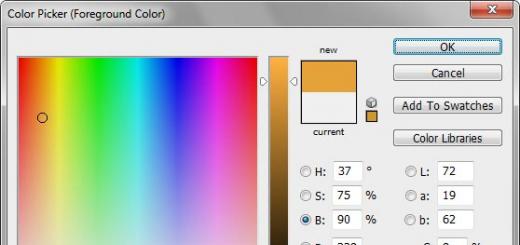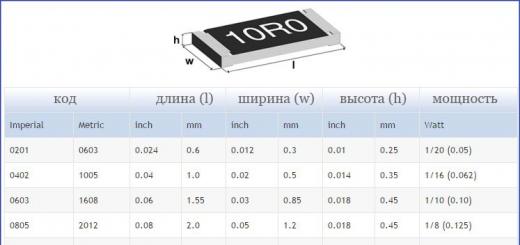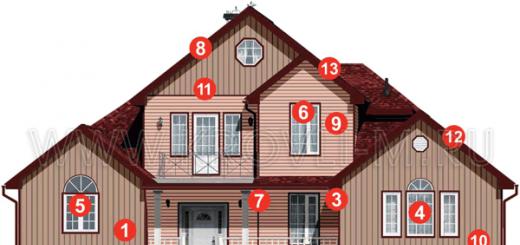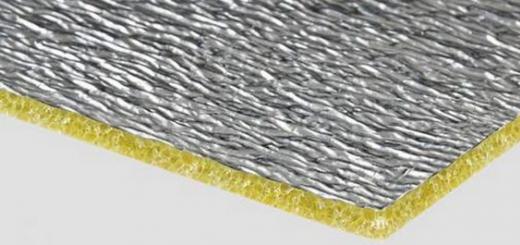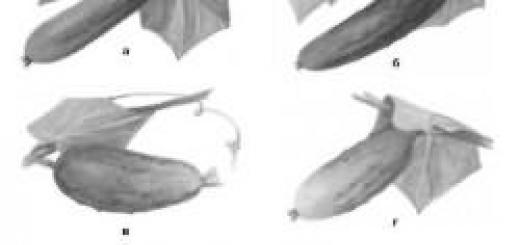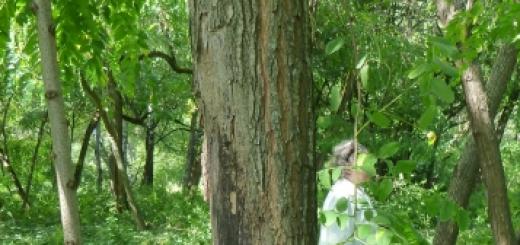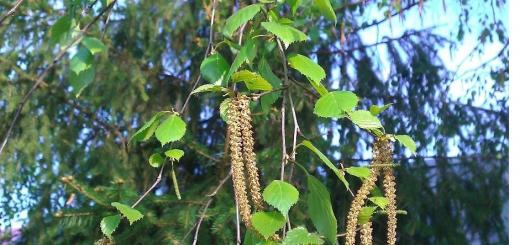If there is a garden, then there is a place in it for a flower bed, a constant companion of the landscape. But there is not always time to keep the flower garden in a tidy condition, since it requires constant attention. There is a special type of flower bed, or rather, a composition consisting of decorative vegetation and gravel backfill, which is less difficult to care for.

A small piece of land in which the space between plantings is covered with gravel can be considered a gravel flower bed. Plants for it are selected depending on the landscape of the garden, but usually they are decorative deciduous or evergreen perennials. Annual herbaceous plants are not used for such purposes at all or only in rare cases, since they quickly lose their decorative value.
As a variation of the flower-gravel composition, you can use flowers in flowerpots. They are dug into the soil and sprinkled with fine crushed stone, or simply installed on a gravel backfill. The advantage of this type of flower garden is its mobility, since at any time you can change the location of the flowerpots and introduce something new into the landscape.

Advantages of a flower garden on gravel
Small stones cover the soil in a dense layer, preventing sunlight from entering. Thanks to this, weed seeds do not germinate, and the flowerbed needs weeding less often. Also, under the layer of stones, moisture is retained longer, which reduces the number of waterings. In addition, this type of flower bed has several other advantages.
Advantages of gravel and plant composition:
- The light background created by the gravel emphasizes the freshness of the greenery;
- The garden always looks well-groomed;
- Under a layer of stones you can hide the irrigation system;
- Gravel protects the soil from overheating;
- Gravel works as drainage, so water does not accumulate on the soil after rain or watering.
A gravel flower bed is especially relevant in a garden where there is not enough space to create a large flower garden. The simplest vegetation looks exotic and unusual in such a presentation.
How to make a flower garden with gravel

There are several ways to create a composition on a stone bed. The simplest one boils down to the fact that the soil around the plants already in the garden is well weeded and a layer of gravel is poured. The disadvantage of this method is that weeds will grow through the stones and will have to be pulled out by hand.
It is more rational to make a gravel bed using geotextiles, which allow moisture to pass through to the soil, but does not allow weeds to germinate. This is done as follows:
- The plot of land allocated for the flowerbed is cleared of weeds, dug up and leveled;
- A geotextile fabric is spread on the soil;
- Holes are cut in places where plants are planted, planting holes are dug and fertile soil is added (Figure 1);
- Prepared seedlings are planted in the holes and watered;
- Geotextiles are covered with a layer of gravel up to 5 cm high (Figure 2).


What plants to plant in a gravel bed
Any plant looks great against the backdrop of light gravel, but there are some that are especially beautiful in its community. These are decorative deciduous trees with an elegant shape of the trunk and leaves, as well as conifers. Among them are cypress, yucca, yew, Rogers, and boxwood. No less excellent on gravel are shrubs with rich green, variegated and variegated foliage: Thunberg barberry, holly mahonia, Fortune's euonymus, variegated hydrangea, Japanese spirea and others.
There are many plants that can be planted in a flower-gravel composition, so it is easier to be guided by what does not need to be planted: fast-growing plantings that sprout shoots, as well as representatives of the flora that need frequent replanting.
[Rated: 3 Average rating: 5]
Decorative crushed stone is a fairly new material in the Russian Federation. Designers are beginning to introduce decorative crushed stone into their practice and use it in landscape design, demonstrating a variety of photos on their websites.
If the crushed stone is properly decorated and painted in different colors, it will look good, for example, in the garden. Black crushed stone is a good option for use in the road industry during construction work.
The answer is simple: with an unusual color - that’s decorative. It can be colored using any binder of the color you need.

In the photo below you can see decorative crushed stone for landscape design. If you look at it closer, you can see that the sizes of the crushed stone are not the same. This is due to the fact that such crushed stone can be prepared from unused concrete, which is crushed into pieces and then painted in the desired color.

How to make crushed stone decorative:
- the stone, crushed into small fractions, is washed;
- placed in any unit. A concrete mixer will also work;
- add dye - and the more, the better. The color of the crushed stone will depend on its quantity;
- then the concrete mixer is turned on, and the crushed stone is spun in the container for 20 minutes to an hour;
- crushed stone is spread evenly over the surface and allowed to dry.

Keep in mind that the higher the quality of the dye, the longer the crushed stone will not lose its color and remain as bright and saturated.

Where is decorative crushed stone used:
- on garden paths;
- evenly distributed on flower beds and flower beds;
- make inscriptions on paths and flower beds;

- decorated near cottages and houses in the form of bedding around the walls;
- laid on the bottom of ponds and along the banks;
- frame monuments, etc.

Activities when laying decorative crushed stone:
- First, prepare the soil. Level the surface using a shovel or spatula. Remove all weeds and plant roots.
- The next stage is to isolate the soil. Lay a plastic film or make a concrete screed 5 cm thick. You must also remember to make a drainage channel in the lowest place during periods of heavy rainfall.

- The place where the crushed stone will be poured must be framed by installing a barrier.
- Next comes the preparatory stage before backfilling. The sand needs to be compacted. Its height should be at least 3-5 cm.
- Backfilling stage. Carefully opening the bag with a sharp tool, pour crushed stone onto the preparatory layer and level it over the entire surface.

Where is crushed stone used in the garden?
Where there is a lot of shade, wetlands, where flowers have problems growing due to the bright scorching sun, are the best place for a rocky landscape.

In decorative ponds and streams, crushed stone also has its place and looks quite beautiful against the background of fish.
In the design composition, crushed stone is a mandatory element. It is laid at the base of the slide and in free places it is filled with space. This makes it possible to make the alpine landscape more natural, similar to a natural mountain slope.

On websites you can often see photos of Japanese-style landscape design, where decorative crushed stone is absolutely indispensable. A special feature of this garden is the use of stones of various sizes and shapes.

Large stones serve as islands and mountains, while small crushed stone is scattered over the entire free area, imitating the water element. They take care of such a garden using special tools. Using a rake, you can create grooves in the crushed stone that resemble flowing water.

Black crushed stone with a fine fraction is usually used for decoration, and medium and coarse - as a technological layer in drainage or capillary work. Medium and large crushed stone is laid directly on the road without any additional processing.

The most important quality required of black crushed stone is its adhesion properties. It is worth noting that this building material will withstand any heavy loads.
Its proper indicators:
- strength properties;
- resistance to frost;
- density;
- radioactive indicators.

Strength properties
As we remember from school, the resistance of a material can be determined by pressing or squeezing it. The strength limit of black crushed stone is 20 MPa. When processing crushed stone, bitumen will not worsen its strength properties. Therefore, if the original material is of low strength, then after processing the black crushed stone will become stronger.
Frost resistance
The frost resistance index is determined by placing crushed stone in a sodium sulfate solution and then drying it. The service life of crushed stone is calculated from 15 years to 400 years.

Density
A fairly important indicator that depends on the configuration of the stone in it. If the percentage of lamellar and cuboidal forms in crushed stone is minimal, therefore, the density and quality characteristics of crushed stone are high.

Radioactive indicators
According to sanitary standards, crushed stone and other building materials are required to have a certificate indicating the class of radioactivity. The first class of radioactivity is suitable for beautifying garden paths and areas, and the second class is intended for construction work.

Where is black crushed stone used?
It can be applied:
- in decoration;
- in construction.

With a fine fraction, black crushed stone is used:
- in the arrangement of tombs;
- in filling garden and park roads;
- as an additional material to the overall design.

Landscape design will give any corner unusual beauty, uniqueness, and create comfort. And colored crushed stone in landscape design will give harmony and bring you closer to nature in your garden plot.
I like
Time moves inexorably forward, new ideas for using various materials appear. Alpine slides and rock gardens once seemed to us something unusual and difficult to implement. Previously, in squares and parks one could see a sculpture, flowerbed or fountain in the center of the poured gravel. However, now, keeping up with the times, we understand that everything is not so complicated, and we begin to experiment.
The use of gravel in the garden is becoming more popular. This material is an integral part of the design. Dry gardens and garden paths are backfilled with gravel. This is an excellent material that you can and should work with. It has a different shape (angular, oval), color (black, red, yellow, gray, orange, green) and size. Depending on the weather, be it sun, fog or rain, its appearance also changes. Gravel is also often used as drainage when planting or as mulch in hot weather to keep the soil cool. Added to the foundation to reduce the consumption of cement-sand mortar and increase the service life of the structure. They are made from gravel, which serve as a dividing border or simply as a spectacular decorative element. 

 Translated from French, the word gravel means coarse sand, particles of which are larger than 1 mm. It is formed during the destruction of a mountain range, and is polished by the water flow of a river, stream or sea. Round pebbles always have impurities, which is why their strength depends. Crushing is carried out industrially depending on the purpose of use, for construction work or for decorative purposes. Fractions can have sizes of 1-3 mm, 3-5 mm, 5-10 mm, 10-20 mm, 20-40 mm, 40-70 mm.
Translated from French, the word gravel means coarse sand, particles of which are larger than 1 mm. It is formed during the destruction of a mountain range, and is polished by the water flow of a river, stream or sea. Round pebbles always have impurities, which is why their strength depends. Crushing is carried out industrially depending on the purpose of use, for construction work or for decorative purposes. Fractions can have sizes of 1-3 mm, 3-5 mm, 5-10 mm, 10-20 mm, 20-40 mm, 40-70 mm.
To create a gravel garden, stones of the same size are used, or for greater expressiveness, stones of different fractions are selected. The smaller the size, the easier and more comfortable it is to walk on. Usually they combine stones up to 10 mm with larger ones.

Advantages of gravel are undeniable, especially if you also take into account such an aspect as the fact that this is an inexpensive environmentally friendly material. When installed correctly, it does not interfere with air exchange, due to which the root system of plants underneath develops at a normal pace.
Decorative material that is equally beautiful in any weather. They can be used to decorate any problem area of the garden where this cannot be done by planting, be it swampiness, impenetrable shadow or poor soil. It looks great paired with wood, glass, moss, metal, which allows you to build a wide variety of compositions.
Does not require skill and is easy to care for.

 Disadvantages of gravel
Disadvantages of gravel
And yet they exist - working with gravel takes a lot of time and physical strength. However, this is not such a compelling argument to refuse to work with the material. But here are the remaining nuances that may be subject to rejection:
— gravel is unpleasant to walk on, especially for older people or small children;
— you can’t ride a bicycle or children’s cars on gravel;
— difficult to transport a wheelbarrow;
— in winter it is impossible to clear snow and ice;
- - dangerous for gravel, they will ruin the entire appearance of the garden;
— in the fall, a lot of leaves will fall on the gravel under the trees, which will complicate cleaning and contaminate the stones themselves;
— over time, gravel becomes clogged and cleaning it will be problematic.

How to make a gravel garden
To create such a corner, you first need to carry out a number of works: clear the area of weeds and debris, make markings. Next, you need to remove the top layer of soil (15-20 cm), lay drainage made of sand or small crushed stone at the bottom. If the area is sandy or loamy, then you can do without drainage. Sprinkle herbicide-treated soil on top to reduce weed growth. When the preparatory work is completed, adjust the relief and leave to rest. If the gravel garden is made on a slope, then the angle of inclination should not exceed 10°, otherwise the gravel will begin to sink over time. In this case, the site is divided into terraces.

When the earth is compacted, we lay a black permeable film (lutrasil, agril), it will not allow weeds to sprout. If you use regular thick film, be sure to make holes in it so that water does not accumulate, but goes into the ground. In terms of area, it should take up more space than the garden topography itself.
Now we start planting the plants by making cross-shaped holes in the film. We unfold the edges so that we get squares, replace the soil in them with fertile one and plant the plants in the hole.
 The following are suitable for planting in a gravel garden: yarrow, tansy, bergenia, sedum, phlox, perennial aster, sedum, hosta, thyme, creeping ground cover and others. Of the tall ones: goldenrod, monarda. From trees and shrubs: juniper, fir, cypress, spirea, . For a gravel garden in the shade, moss combined with ferns can be an interesting option. But then such elements of rutaria as must be present. Select plants depending on their characteristics (moisture-loving, drought-resistant) and your desire to care for them. When finished, fill all gaps with gravel, starting from the most distant place. The gravel layer should be at least 5 cm. Before backfilling, it is advisable to rinse the stones with water to remove remnants of weeds and pathogens. Don't be alarmed if the gravel garden seems empty by the time you finish the work; over time, the plants will grow and you can adjust everything.
The following are suitable for planting in a gravel garden: yarrow, tansy, bergenia, sedum, phlox, perennial aster, sedum, hosta, thyme, creeping ground cover and others. Of the tall ones: goldenrod, monarda. From trees and shrubs: juniper, fir, cypress, spirea, . For a gravel garden in the shade, moss combined with ferns can be an interesting option. But then such elements of rutaria as must be present. Select plants depending on their characteristics (moisture-loving, drought-resistant) and your desire to care for them. When finished, fill all gaps with gravel, starting from the most distant place. The gravel layer should be at least 5 cm. Before backfilling, it is advisable to rinse the stones with water to remove remnants of weeds and pathogens. Don't be alarmed if the gravel garden seems empty by the time you finish the work; over time, the plants will grow and you can adjust everything.


How to make a garden path from gravel
Outline the boundaries of the future path using pegs and nylon thread. Fill the inner part with a layer of sand (15 cm), lay a layer of building crushed stone (15 cm) on top and finish filling with a layer of gravel with a fraction of up to 1 cm. You can decorate a gravel path with a curb stone, which will solve not only the question of how to decorate the border, but also the problem gravel spreading on the sides. You need to lay it a little higher. At the end of the work, water the gravel garden path, compact all layers well again and enjoy the work done. The average track width is usually 1 m.



The dacha is a favorite vacation spot for the happy owners of a private house. And if you also have a piece of land, then you can work in between rests. After all, nothing inspires “work that ennobles a person” more than fresh air. In addition to cultivated plants in the garden, every dacha must have a flower garden, and the shape of the flower beds depends only on the imagination of the summer resident. This can be either a simple, unfenced front garden along the fence, or an elaborate flower bed. Recently, a new trend has become increasingly popular - a gravel flowerbed, which practically does not require weeding, since weeds are removed even at the stage of laying the flowerbed.
Benefits of a gravel bed
A gravel bed is a mixture of stone and plants, laid and planted in a certain order. This is a small stone garden that confidently outshines simple flower beds due to its advantages:
- requires a minimum of care due to the almost complete absence of weeds, since instead of soil there is a gravel backfill;
- the ability to create flower beds in a variety of places on the site (in the shade, in the sun, on a slope, in blind corners);
- giving any shape and size;
- simple technology for laying out a flower bed;
- no need to frequently water and fertilize planted plants.

Making a gravel flowerbed at your dacha with your own hands is not that difficult, following the following step-by-step recommendations.
Soil preparation

Select the area where the flowerbed will be laid out and mark its boundaries - drive in pegs and pull the rope. A flower bed with an irregular shape will look more organic. Next, in the designated area, remove the top layer of soil to a depth of 20 cm. Select all the roots in the designated area for the flowerbed. In order not to miss weeds that have not yet sprouted, moisten the area and leave for a week so that they hatch and also remove.
Next, dig up the area. To create a drainage layer when digging, add coarse sand or expanded clay. Then compact the soil a little with a garden roller and cover the dug up area with the first layer of geotextile. It will serve as an obstacle to perennial weeds remaining deep in the ground, and will also keep the gravel from subsidence.

Geotextiles cut into pieces must be laid so that a continuous fabric is obtained. The pieces are fastened together with special degradable fasteners.
After that, it will be completely covered with a mulching cloth, in it every 3 sq.m. you need to pierce holes to drain excess water.
Preparing a place for planting

Having decided on the places for planting the plants, they are also cut out in agrofibre, guided by the size of the soft planting containers. Dig a hole in the cut hole, place a container there, fill it with soil and plant the prepared plant. Such containers are very convenient when planting gravel beds, as they protect the root system of flowers or shrubs from damage and separate the planting site from the crushed stone layer.
If the desire to plant new flowers appears after the flowerbed has been filled with gravel, to plant them you must:
- Select crushed stone in the planting area.
- Make a cut in the geotextile and fold the edges down.
- Dig a hole for the seedling.
- Plant the plant, cover it with a small layer of soil, and water it.
- Place the removed gravel back in place.
Filling a flowerbed with gravel

Fill the remaining space after planting with the first layer of gravel. Lay a second layer of geotextile on top and cover with a second decorative layer of gravel.
Video on how to make a flowerbed from colored gravel
Decorative filling refers to bulk materials of different fractions used for mulching the soil. This can be small and large gravel, stone chips, shells, sand, pebbles, wood chips, pine nut shells, bark and decorative “pebbles” made of plastic or glass.

The use of various decorative fills in the landscape can transform the appearance of your site. A number of decorative compositions - rock garden or rock garden, Japanese landscape, landscape pond, sand garden - are unthinkable without backfills. In addition, they can be used to create patios and paths, and for flower beds. Mulching the soil protects it from excessive evaporation of moisture. And by using multi-colored glass, colored decorative chips, and filling with crushed stone of different shades in the garden, you can achieve phenomenal effects.
Decorative organic fills
Among these fillings, the most popular are cedar husk and pine bark.

First of all, the advantages of pine bark include a long service life: the bark does not rot for a long time (especially large fractions) and does not fade. Moreover, such backfill is an environmentally friendly material that fits into the composition of the landscape.

Wood chips And cedar husk They are painted in different colors and thus provide a wide field for experimenting with coloring in the garden. Wood chips are painted with environmentally friendly paints. Of course, you need to use colorful chips in the garden with caution: both the color of the mulch and the composition must be consistent with the surroundings.

Too bright colors of colored wood chips are inappropriate in landscape compositions. But a variety of colors will allow you to create colorful soft paths.
The indisputable common advantage of these fills is their low cost. These materials themselves are inexpensive, and some of them (chips, bark) are by-products of wood processing industries.

The main disadvantage is the relatively short service life.
Using organic fills in flower beds, in tree circles - wherever they are laid directly on the ground - you need to keep in mind that over time, the rotting lower layer of mulch changes the composition of the soil. Most organic fills acidify the soil. For some plants, this property of decorative fillings can be an advantage - for example, for rhododendrons.

When laying decorative filling It is advisable to add a small amount of material to the soil every year - firstly, this will preserve the appearance, and secondly, it will compensate for rotting.
Inorganic fills
These fills include crushed stone, gravel of different fractions, pebbles (sea and river), and sand. Inorganic fills also include materials of artificial origin - plastic and colored glass (colored decorative “pebbles”).
- Crushed stone- This is crushed crumbs, usually with sharp corners and edges. Crushed stone is made from stones of different types (it can be sandstone, marble, slate, limestone, granite) and can be of a variety of colors.
- Gravel- This is a stone of small fractions of different shapes (both sharp-angled and smooth stones can be found). Gravel filling is used to design garden paths, driveways, and patios.
- Pebbles- a small, smooth stone with round outlines. The sea pebbles with colored pebbles are very beautiful.
- Sand- This is the filling of the smallest fractions. Small fractions of one rock (marble, quartz) or small crumbs of mollusk shells are used.
The advantage of inorganic fills lies primarily in their long service life. The gravel backfill does not crumble and does not change its appearance. Stone fills require almost no maintenance. In addition, gravel filling protects the soil from overheating and does not retain water.

One of the main disadvantages of inorganic fills is that it is very difficult to remove accumulated debris (wood litter) from them, so it is better to place crushed stone paths and compositions with gravel fill away from trees. Over time, decorative inorganic fills silt, and soil particles, seeds and sand can get into them. As a result, weeds appear on the covered surface. But they fall out easily.

Using decorative fills in the garden
Filling has become widespread in the design of patios and paths. But decorative fills are also used as mulch in flower beds and for decorating trunk circles near trees.
All types of fills can be used to design paths. To form a path, it is necessary to dig a shallow pit, lay geotextiles, and then fill it with backfill.

The best layer is 7 cm. Using the same technology, huge free spaces can be decorated with decorative backfill. By combining decorative fills of different colors and fractions, you can achieve beautiful effects. To make the composition more diverse, you can add several expressive green plants.
To do this, an incision is made in the geotextile, and a plant is planted in the resulting hole.

In addition, decorative fills can be used as an element of various decorative compositions - to create “stone screes” in rockeries, on alpine hills and on the shore of a garden pond. Sometimes decorative fills serve to highlight some specific plants.

Mulching with organic materials can be a good option when starting a garden and planting perennials. It is known that immediately after planting is traditionally a losing proposition for most perennials. If you plant them at a distance that is best for their further development, soil will inevitably remain between the flowers.

But if you decorate these spaces, for example, with wood chips, then the “bare earth” will look like part of the design idea, and your garden will take on a complete look.
